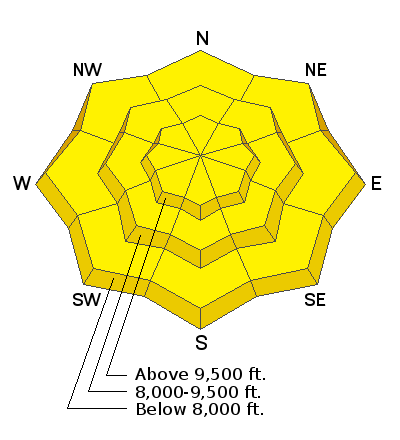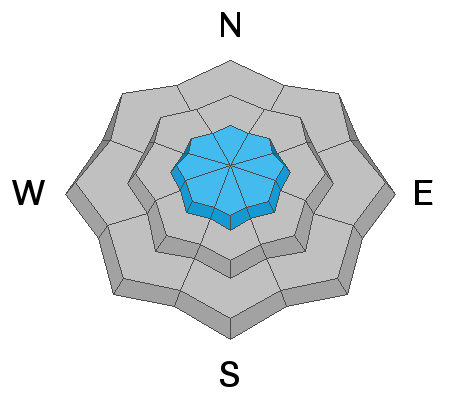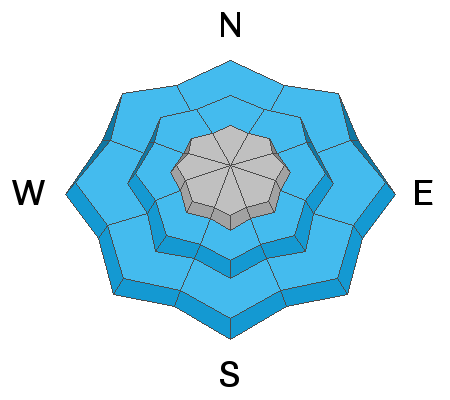Overnight we picked up another 2-4" of new snow throughout the Provo range. The southerly winds picked up around 7:00 pm last night and are currently blowing 10-20 mph gusting into the 30's and 40's across the high ridge lines. At mid elevations the winds are blowing in the 10-15 mph range. Temperatures are in the mid 20's °F at 10,000' while the lower elevation (7,500') trail heads are hovering around the freezing level of 32 °F.
We should continue to see snow showers and good cloud cover into the early/late afternoon today as a weak system lifts to our north and east. Temperatures will remain on the colder side with 10,000' temps staying in the mid 20's. The southerly winds are forecasted to decrease as the day wears on. The sun may poke through the clouds late in the afternoon as high pressure begins to build in later this evening.
The best riding and turning conditions are on the northerly facing slopes above about 9,000' in elevation, where you can still find dry cold powder snow. Yesterday's warm temperatures from green housing, shrink wrapped the mountain snowpack and made most all other aspects and elevations damp and soggy by mid morning. Today, you can expect all but mid and upper elevation northerly facing terrain to be crusted with 2-6" of dense surfy snow on top.
One observer noted they heard huge rumbling noises coming from the Primrose Cirque area yesterday afternoon as they walked around below. They did not see the avalanche but suspected it was large. The big news came from Davenport Hill in the Wasatch range when a party was walking along the ridgeline and triggered a giant cornice. Luckily no one was caught or below as the giant house size chunk of snow rocketed down slope breaking many trees (Video below: Winslow).










